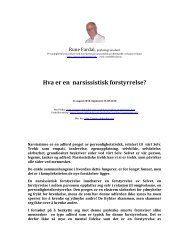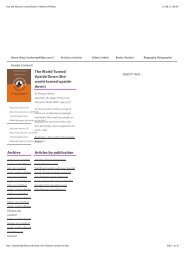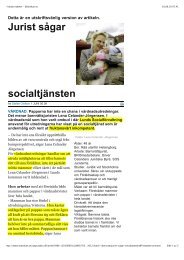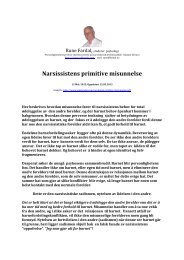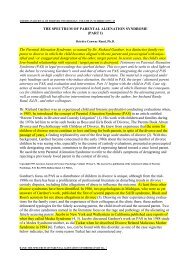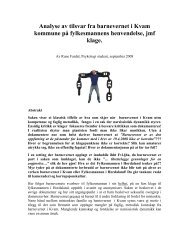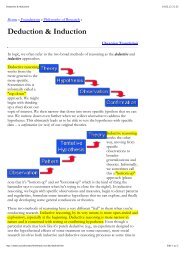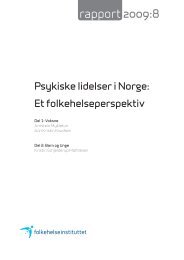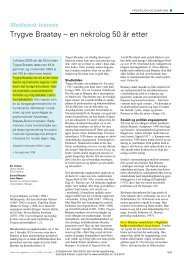The origins of narcissism and narcissistic personality disorder a
The origins of narcissism and narcissistic personality disorder a
The origins of narcissism and narcissistic personality disorder a
Create successful ePaper yourself
Turn your PDF publications into a flip-book with our unique Google optimized e-Paper software.
68 JOHN S. AUERBACH<br />
the baby’s but instead a cross-modal matching <strong>of</strong> it. Nevertheless,<br />
communion or togetherness, if not oneness, constitutes the dominant<br />
tone <strong>of</strong> affect attunement.<br />
Of course, misattunements, both purposeful <strong>and</strong> nonpurposeful, can<br />
occur as well (Stern, 1985). A parent can intentionally overmatch or<br />
undermatch the intensity <strong>of</strong> an infant’s behavior so as to increase or<br />
decrease the infant’s level <strong>of</strong> arousal. Or a parent can unintentionally<br />
misidentify the quality or intensity <strong>of</strong> an infant’s affective state. Much<br />
<strong>of</strong> the time, according to Stern, misattunements are a normal part <strong>of</strong><br />
parent-infant communication. Although severe or pervasive misattunements<br />
are usually required to induce psychopathology, sometimes<br />
even subtle mismatches can result in psychological disturbance. Thus,<br />
attunements <strong>and</strong> misattunements are the mirroring communications<br />
that, according to the various theories <strong>of</strong> Kohut (1971, 1977), Lacan<br />
(1949/1977, 1953), Lichtenstein (1961, 1964), Sullivan (1940, 1953,<br />
1972), <strong>and</strong> Winnicott (1971/1982), establish the affective core <strong>of</strong> the<br />
preverbal self (Emde, 1983).<br />
Implications <strong>of</strong> Research Findings<br />
<strong>The</strong> current empirical literature on infancy is an embarrassment <strong>of</strong><br />
riches, <strong>and</strong> this brief, highly selective summary <strong>of</strong> it in no way does<br />
justice to the present state <strong>of</strong> knowledge. It shows quite clearly, however,<br />
that infants, even in the first months <strong>of</strong> life, are biologically programmed<br />
to participate in, seek out, <strong>and</strong> develop presymbolic, prereflective<br />
theories about the environment. Infants are born with, <strong>and</strong><br />
develop in the first year <strong>of</strong> life, remarkable capacities for learning about<br />
<strong>and</strong> becoming involved with the world around them, especially the<br />
human world. Although they come into the world with at most rudimentary<br />
awareness <strong>of</strong> the difference between self <strong>and</strong> others, newborns<br />
are, nonetheless, designed to start elaborating this distinction<br />
from very early on. <strong>The</strong>re is no developmental period in which infants<br />
are unaware <strong>of</strong> their surroundings or uninterested in establishing bonds<br />
with their caregivers. Because babies engage with their caregivers in<br />
the mutual regulation <strong>of</strong> arousal <strong>and</strong> attempt to keep stimulation within<br />
an optimal range, one can safely reject the constancy principle, the<br />
drive to eliminate tension or reduce it to an absolute minimum, as an<br />
organizing dimension <strong>of</strong> behavior, whether infant or adult.




